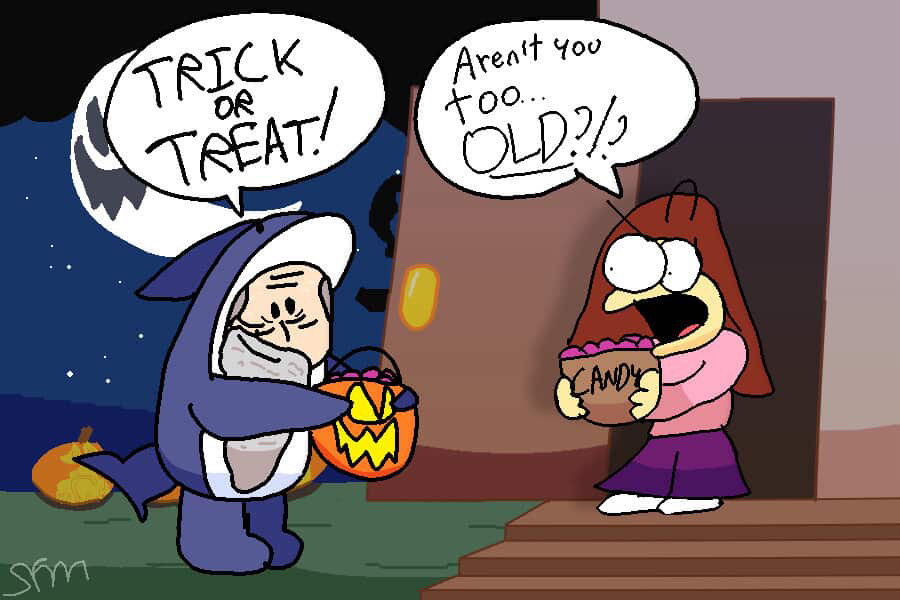Weezer’s “Pacific Daydream” Review
Weezer’s “Pacific Daydream” Releases to Immediate Backlash and Criticism from Fanbase
December 4, 2017
After releasing their 2014 back to the roots rock album “Everything Will Be Alright in the End,” Weezer returns to the pop genre in their latest release “Pacific Daydream.”
A Quick History
Since their formation in 1992 and release of their iconic self-titled debut album in 1994, dubbed “The Blue Album,” Weezer has been known to put out very popular rock songs filled with hook-heavy guitar riffs and catchy lyrics such as in songs like “Buddy Holly,” “Undone (The Sweater Song)” and “El Scorcho.” Despite worldwide success with previous rock albums, after the release of Weezer’s fourth and most commercially unsuccessful studio album at the time, “Maladroit,” the band began turning to a new pop style of music in their fifth album “Make Believe.” They continued producing these style of songs on albums “The Red Album,” “Raditude” and “Hurley,” giving the band more air time on radio stations, but disappointing many long time fans of Weezer who were around for the beginning albums like “The Blue Album” or “Pinkerton.”
Then in 2014, four years after their last album, “Hurley,” Weezer returned back to their rock roots in a stunning studio album titled “Everything Will Be Alright in the End.” The band continued with the rock-styled music in their 2016 release “The White Album” after “Everything Will Be Alright in the End” peaked in the U.S. charts at number five and sold a quarter-million copies worldwide. Now, on Oct. 27, 2017, Weezer has released their newest album “Pacific Daydream” as a pure pop album, including very limited amounts of guitar and drums and a heavy emphasis on a synthesised/Electronic Dance Music (EDM) sound.
“Pacific Daydream” Review
Weezer’s 11th studio album, “Pacific Daydream” was a gigantic step away from last year’s “White Album.” The sounds in each of these albums are complete polar opposites of each other; one sounds like a Beach-Boys-meets-Green-Day crossover while the other sounds like an almost pure disco/pop-sounding album with little-to-no electric guitars, drums or bass guitars prevalent in the songs. This change in the sound of their music from a rock sound back to a pop style was a completely unexpected move by Weezer for most of their fans who were just starting to get their hopes up for future Weezer rock albums.
The overwhelming sound I hear when listening to this album is just an over-produced, over-polished sound with underwhelming choruses and confusing lyrics. Other Weezer fans seem to agree with me, with low-scoring reviews and plenty of hate for the album on several social media platforms showing that the new pop sound is not a change fans want to see in Weezer’s music.
Although I’m not a huge fan of this new direction Weezer is taking with their music, there are a few positives to take out of this album. Most songs on this album, if not all of them, contain very catchy choruses that easily get stuck in your head although the lyrics are very abstract and confusing. My favorite tracks off this album are definitely “Mexican Fender” and “Weekend Woman.” These two songs are very catchy, have melodies that sound nice and remind me a little of the “White Album’s” beachy vibe and I especially enjoy the bridge in “Mexican Fender” due to the harmonizing vocals by guitarist Brian Bell and the ascending/descending progression of the bridge tone.
Because of the overall underwhelming and confusing nature of most of these songs on this album and because most of these songs sound like the same cut-and-pasted template they used on the entire album, the highest I can give Weezer’s “Pacific Daydream” is a measly four out of ten stars. I would definitely encourage fans of modern pop songs to give the album a look, but warn any fans of previous Weezer albums that this one is unlike anything they’ve done before and many other people, myself included, are not fans of it at all.






![Senior Jett Mckinney stores all the clothes in his own room, with half of it stored in his closet along with his personal clothes, and the rest taking up space in his room.
“There’s been times [when] there’s so much clothing stored here and it gets overwhelming, so I end up having to sleep somewhere else in the house,” Mckinney said.](https://cphswolfpack.com/wp-content/uploads/2025/11/DSC_0951-1200x800.jpg)



![Broadcast, yearbook and newspaper combined for 66 Interscholastic League Press Conference awards this year. Yearbook won 43, newspaper won 14 and broadcast took home nine. “I think [the ILPC awards] are a great way to give the kids some acknowledgement for all of their hard work,” newspaper and yearbook adviser Paige Hert said. “They typically spend the year covering everyone else’s big moments, so it’s really cool for them to be celebrated so many times and in so many different ways.”](https://cphswolfpack.com/wp-content/uploads/2025/05/edited-ILPC.jpg)




![Looking down at his racket, junior Hasun Nguyen hits the green tennis ball. Hasun has played tennis since he was 9 years old, and he is on the varsity team. "I feel like it’s not really appreciated in America as much, but [tennis] is a really competitive and mentally challenging sport,” Nguyen said. “I’m really level-headed and can keep my cool during a match, and that helps me play a bit better under pressure.” Photo by Kyra Cox](https://cphswolfpack.com/wp-content/uploads/2025/09/hasun.jpg)

![Bringing her arm over her head and taking a quick breath, junior Lauren Lucas swims the final laps of the 500 freestyle at the regionals swimming competition on date. Lucas broke the school’s 18-year-old record for the 500 freestyle at regionals and again at state with a time of 4:58.63. “I’d had my eye on that 500 record since my freshman year, so I was really excited to see if I could get it at regionals or districts,” Lucas said. “ State is always a really fun experience and medaling for the first time was really great. It was a very very tight race, [so] I was a bit surprised [that I medaled]. [There were] a lot of fast girls at the meet in general, [and] it was like a dogfight back and forth, back and forth.” Photo by Kaydence Wilkinson](https://cphswolfpack.com/wp-content/uploads/2025/03/Kaydence-2.7-23-edit-2.jpg)


![As her hair blows in the wind, senior Brianna Grandow runs the varsity girls 5K at the cross country district meet last Thursday. Grandow finished fourth in the event and led the varsity girls to regionals with a third place placement as a team. “I’m very excited [to go to regionals],” Grandow said. “I’m excited to race in Corpus Christi, and we get to go to the beach, so that’s really awesome.” Photo by Addison Bruce](https://cphswolfpack.com/wp-content/uploads/2025/10/brianna.jpg)















![Holding a microphone, baseball booster club president Chris Cuevas announces the beginning of the annual cornhole tournament. The event has been held for the past two years and is designed to raise money for the baseball program in a fun way. “We’re a baseball team, so people love to compete,” Cuevas said. “So we figured we better do something that gets [their] attention. They want to compete. It’s not a hard sport to do, and we have all different [skill] levels [of participants].” Photo by Henry Mueller](https://cphswolfpack.com/wp-content/uploads/2025/11/Henry-715-1200x900.jpg)


















